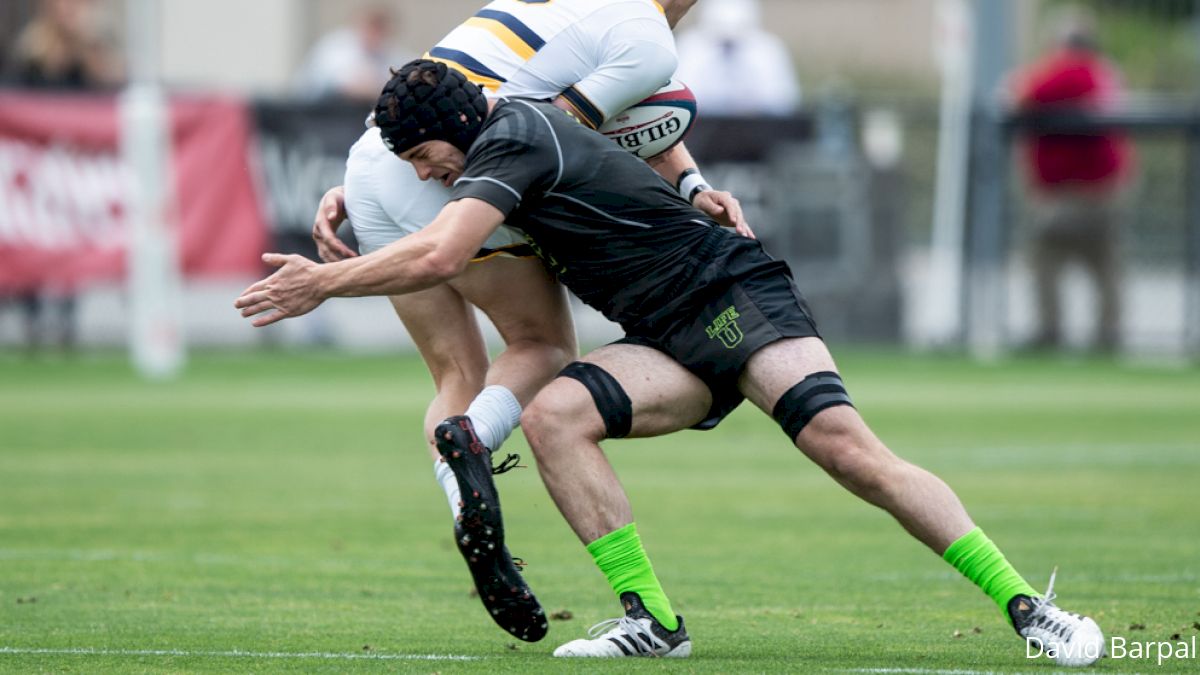Rugby Tackling Tips & Drills We Love
Rugby Tackling Tips & Drills We Love
Tackling in rugby is arguably the most important aspect of the game. Here are some good tips and drills to work on the craft.

You can have the fastest, strongest, most skilled, smartest rugby team on the planet, but if they can't tackle they'll rarely win a game. It's the most fundamental aspect of rugby and no matter what size a player is, they can always execute a tackle with proper technique, commitment, and aggression.
Tackling effectively comes down to four primary aspects: footwork, upper body work, anticipation, and, most importantly, a desire to make the tackle. You can have the first three down to a T, but if you don't want to make the tackle because of whatever reason, your efforts will be fruitless.
Here we will run through a few drills that address each of these facets of the tackle:
Footwork
When you want to make a tackle, the idea is to dictate where the runner goes. You want to force them into a specific direction that makes it easiest for you to make the tackle. On some teams, you'll have an inside leverage, forcing the player to move to your outside. On other teams, you'll take an outside leverage, forcing the runner to cut back to your inside where help defense is.
Regardless of where you want the runner to go, the fundamentals of footwork will be the same. You'll want to keep your shoulders square so you can apply the hit through the ballcarrier instead of hitting him/her from the side with a glancing blow. Try and line up the shoulder you plan to use in the tackle on the runner's sternum; if you're playing inside leverage, your outside shoulder (the one furthest from where the ball is coming from) will align with the middle of the runner's chest. If you are playing outside leverage, then the inside shoulder will line up with the carrier's sternum.
As you approach the player to make the tackle, keep your feet active before the contact and stay slightly bent at the knees so you can react explosively to whichever direction the runner goes in. Continue to close the space between yourself and the runner, giving them less and less room to maneuver. As you close the space, keep your alignment you began with to force them to go the direction you want. If they choose to change direction, they'll come right at you and you'll make the tackle.
This drill here (Min 15:45 - 24:09) is perfect for working on your footwork before the tackle:
Upper Body Work
We always have to use the upper body to make a tackle, so using proper technique is key. You will always need to wrap up, but that doesn't mean you can't still put in a strong shoulder. As you engage the tackle, try and shoot your arms through the ballcarrier to generate more force and power with the shoulders and your biceps.
Your head should always remain on the side that your body is before making the hit. That means if the runner is on your right, you keep your head on the left side of the runner. Do not stick your head across the body to make a tackle or you will get knocked out!
Watch this video here (0:00 - 11:34) for a quick demonstration on how to effect a strong upper body in the tackle:
Anticipation
Anticipating where the runner will go makes your job as a defender so much easier than simply reacting. As you approach the player to make the tackle, you can use your footwork to anticipate where he/she might go. This is where dictating where the runner goes becomes especially important. If they only have one place to go, it's easy to anticipate where they'll be going.
Use the defenders around you to help get an understanding of where the runner has to go. Listen and constantly communicate with your teammates to get an idea of what your exact job is. If the communication and defensive line is in sync, you won't have to concern yourself with as big of a space to defend. Therefore, you know that if the runner runs into your channel you'll be ready to smoke them!
Still keep your feet active so that when the runner commits to a direction, you can meet them there with full force. If you are squared up with the carrier and haven't forced them to go a specific direction, you can still anticipate that they'll head in one of two direction: right or left. In this case, keep closing down space, but be light on your feet and relaxed, but ready to explode moving into tackle.
Watch this drill here (24:19 - 35:05) to get an idea:
Desire
The most important aspect to tackling can't be taught in a drill or on paper. It comes down to heart and guts, and a willingness to put your body on the line to help the team. Don't be scared and don't be lazy!
Watch this video here to see how far heart and desire can take you on the field: